Excerpts from Jim Conrad's
Naturalist Newsletter
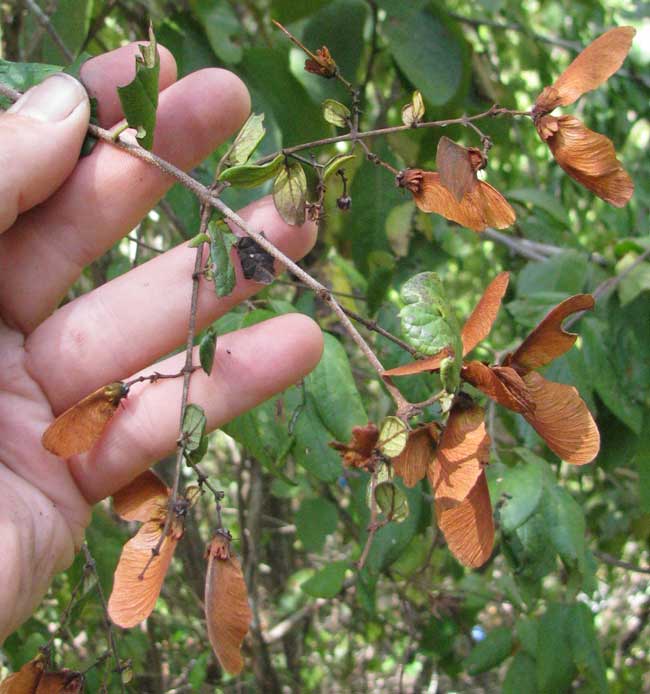
from the January 9, 2011 Newsletter issued from Hacienda Chichen Resort beside Chichén Itzá Ruins, central Yucatán, MÉXICO; limestone bedrock, elevation ~39m (~128ft), ~N20.676°, ~W88.569°
HETEROPTERIS
There's something appearing in the woods these days bound to make any temperate-zone flower sniffer scratch his or her head. It's shown above.
That's a collection of winged fruits, or samaras, at the end of a woody plant that's as much vine as it is shrub -- a scrambling bush, or a shrubby vine with a treelike trunk. What catch your attention, though, are the fruits. They very much look like the North's winged maple samara-fruits, except that each fruit cluster has three fruits instead of the maple's two. You can see another difference below:
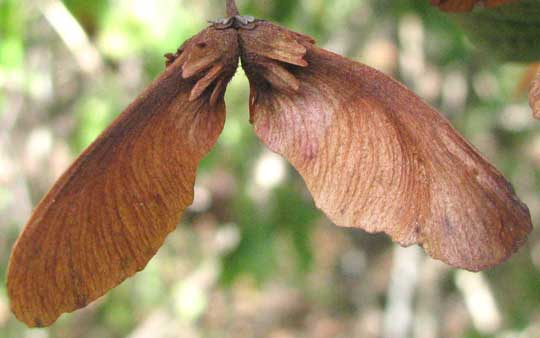
Look at those weird appendages at each samara's base, covering the seed area. You can see them closer up below:
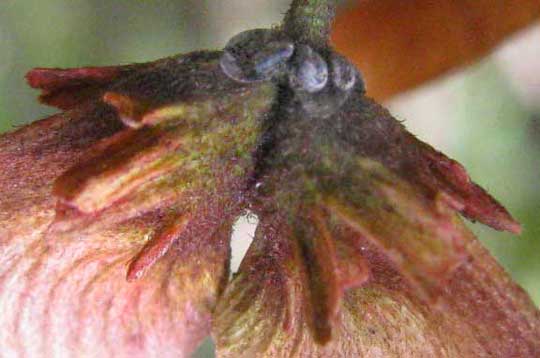
There at the top you see two of five, rounded calyx lobes, each lobe or sepal equipped with two glands. Below the calyx the fruits arise.
What we have here is HETEROPTERYS BRACHIATA, a member of the Malpighia Family. That family is little known in the North but is well represented in tropical America. The best known member of the family in these parts is the Nance tree with its yellow, cherrylike, edible fruits.
Another genus in the same family, Stigmaphyllon, produces similar clusters of fruits, but in that genus the "backbones" of the fruits' wings lie on the inside of the cluster, with the wings' thinning edges facing outwards, while in Heteropteris the wings' "backbones" are on the outside.
from the September 24, 2017 Newsletter issued from Rancho Regensis north of Valladolid, Yucatán, MÉXICO
HETEROPTERYS VINE FLOWERING
About 15ft (4.5m) above the rancho's entry gate a woody vine reaches into open space, looking for something to twine on, but finds nothing. Below, you can see its curling and twisting, seemingly expressing its frustration
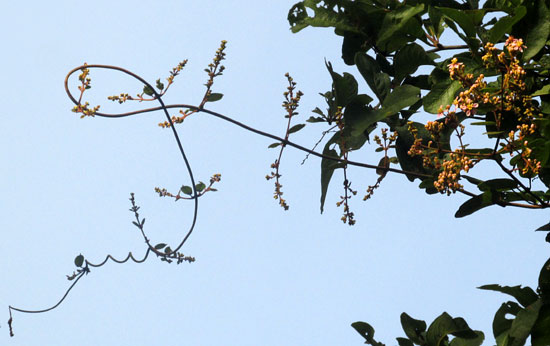
Notice at the picture's right the large cluster of small, pinkish blossoms. A closer look at a dangling branch's flowers and rough, leathery leaves arising in pairs along the stem is shown below:
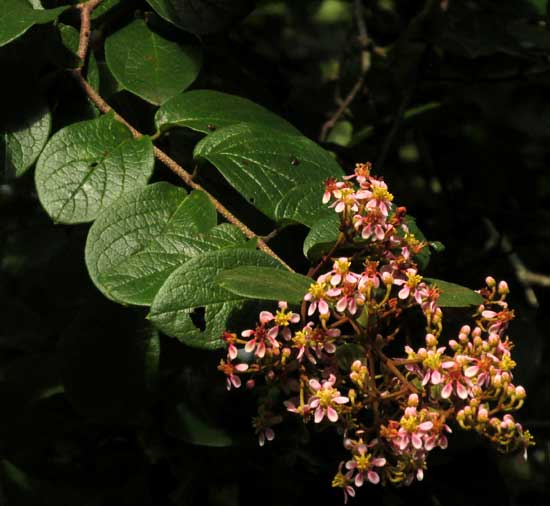
Below, up closer still, the flowers show some interesting field marks:

Five pink petals narrowed to "claws" at their bases, stamen filaments united at their bases... but the feature telling us what family the vine belongs to appears on the unopened flowers at the picture's top, right corner. Do you see those peanut-shaped, yellowish, shiny items on the sepals' undersides? Those are glands, two per sepal, and whenever you see flowers with sepals bearing such paired glands you need to think "Malpighia Family, Malpighiaceae."
Members of the Malpighia Family overwhelmingly occur in the American tropics, so you can be a fairly good temperate zone naturalist and never have heard of this family. The Barbados-Cherry with its good tasting fruits may be the best known family member.
A monograph at the Biblioteca Digital de la Medicina Tradicional Mexicana website sponsored by UNAM, the Autonomous University of Mexico in Mexico City, tells us that in Mexico a medicine from the vine is used to calm the nerves, and to deal with fury and craziness.
Maybe one day centuries ago a shaman someplace in Mexico saw the vine as pictured above, frustrated in its efforts to seek support, contorting its limbs into various kinks and knots, and the shaman thought: "That vine is trying to tell me that it's good for shot nerves... "